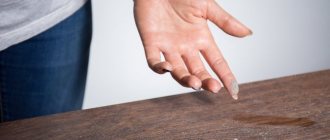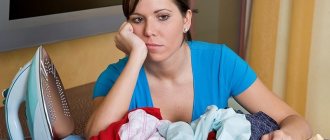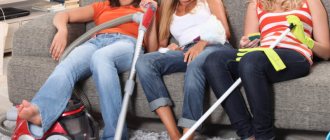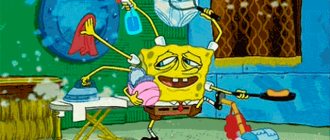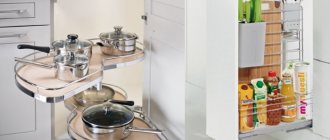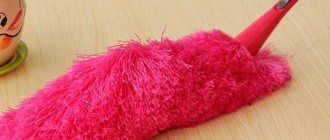You can listen to this article in full on our podcast:
It is not easy to carry out competent and effective general cleaning, especially quickly and efficiently, even in a one-room apartment. What can we say about inpatient medical institutions, where the requirements are many times higher. Impeccable tidying directly affects the well-being of patients and staff.
Therefore, cleanliness in hospitals is maintained strictly according to established standards and instructions.
If you are an employee of a medical institution, then the general requirements for the sanitary maintenance of premises, equipment and equipment will be useful to you.
To enlarge the picture, click on it
To enlarge the picture, click on it
Each room has its own instructions for the cleaning algorithm, as well as separate tools, means, frequency and rules of action.
Regular types of cleaning in medical institutions
For obvious reasons, maintaining cleanliness in the hospital is necessary throughout the working day.
It is natural that in addition to general cleaning, there are three more types of cleaning of hospital premises.
Preliminary
Performed by employees early in the morning.
Includes:
- eliminating dust on horizontal surfaces using disinfectants;
- washing floors and disinfecting the premises for an hour using a bactericidal lamp.
Current
It is carried out throughout the working day (several times if necessary) in order to remove dust and dirt from the offices.
- surfaces are wiped using disinfectant solutions;
- The floors are washed and the premises are disinfected within an hour using quartz treatment.
Final
Performed in the evening to prepare offices for work.
- all surfaces, including vertical walls, are wiped with antiseptics;
- wet treatment of floors is carried out;
- The bactericidal lamp turns on for an hour.
General
Also included in the regular list. We will tell you about it in more detail, since this process requires more careful and systematic actions.
Regardless of the type of cleaning, any of them must be carried out in accordance with sanitary and epidemiological standards.
The infectious safety of people directly depends on the strict adherence to them.
Routine cleaning in health care facilities
We prepare equipment and cleaning products
Here is a sample list of what will be needed during the work process:
- microfiber, fabric and paper wipes for cleaning surfaces;
- To treat screens, technicians use special alcohol-free wipes;
- you can stock up on old newspapers for washing windows and mirrors;
- special products and polishes for different materials (glass, wood, tiles, laminate, linoleum, sanitaryware, etc.) will also be useful;
- vacuum cleaner with attachments;
- dustpan, broom;
- mop and water bucket;
- brushes for cleaning sanitary ware;
- air fresheners;
- large garbage bags.
Next, we’ll tell you what’s included in cleaning and how to get the job done faster without sacrificing quality.
General cleaning in medical institutions: Specifics
This complex of regular cleaning takes a lot of time, and on the day of the procedure, the appointment of planned patients is limited and planned operations are cancelled.
To ensure speed and quality of the process, hospitals and private clinics are increasingly inviting specialists from cleaning companies.
This significantly reduces wasted hours and frees up medical staff to perform their immediate duties.
The presence of high-tech devices allows this service to be carried out at a highly professional level, in compliance with all sanitary requirements.
Based on the frequency of general cleaning in medical institutions, they can be divided into three categories:
Monthly
They are carried out according to a pre-approved order in hospital wards, auxiliary rooms, therapy rooms, x-rays, massage, dentistry (with the exception of surgery).
In this case, everything is subject to treatment: from lamps and equipment, to walls, floors and ceilings.
Weekly
The aseptic regime of such premises as the operating unit, intensive care unit, central treatment center, dressing room, vaccination room, treatment room, and maternity room requires general cleanliness every week.
They are completely washed using antiseptics and disinfected.
Unscheduled
They are carried out for epidemiological reasons, in cases where bacteriological control shows an underestimated level of asepsis, as well as in separate wards after patients are discharged.
When cleaning unscheduled, disinfection is also carried out after wet cleaning with antiseptics.
Wet cleaning of premises in a hospital, especially general cleaning, cannot be done without the proper equipment, namely:
- workwear: gowns, respirators, hats, waterproof (preferably rubberized) aprons and gloves.
- labeled equipment according to the approved SanPiN list: basins, buckets, mops, napkins, rags, washing and disinfecting solutions.
Note. Window glass is washed from the inside at least once a month, and from the outside - once a quarter. The exception is the winter period.
We invite you to familiarize yourself with the schedules for general cleaning in health care facilities (operating unit, treatment room, wards):
To enlarge the picture, click on it
To enlarge the picture, click on it
To enlarge the picture, click on it
Making a cleaning plan
Preparing a spring cleaning plan is an important preliminary step. It is much easier to think through the work algorithm in advance than to be distracted by trifles during the cleaning process. If you clearly know what to pay attention to and in what order to put things in order, you will save a lot of time and effort.
The recommendations from our article will help you create a cleaning plan. If you wish, you can adjust it or supplement it according to your preferences.
General cleaning of a hospital department: Algorithm
So, we begin to generalize in the hospital department.
Whether general cleanliness is carried out weekly or once a month, the algorithm is practically the same for all departments.
But each person has their own set of marked equipment, depending on the operating mode and purpose of the department.
Initially, we check whether we have all the necessary tools and antiseptics intended for cleaning.
Do not forget about disconnecting electrical appliances from the network. This also applies to quartz lamps.
We empty the offices of furniture and equipment to the maximum, or move them to the center of the room.
In the wards, the beds are moved away from the walls and covered with special oilcloth fabrics. During this time, patients should not be in the room.
We put on special equipment. We remove and throw away garbage from the premises. Prepare and pour solutions into containers.
We spray doors, windows, window sills, equipment, furniture with an antiseptic from a spray bottle, wiping them with napkins.
Do not forget about lighting lamps, which are recommended to be cleaned with medical alcohol and rags, which should be dry.
The most labor-intensive procedure is the treatment of radiators.
We use brushes to treat both the radiator itself and the space behind it, where dust especially likes to accumulate. Wash the floor with antiseptic agents.
All manipulations are carried out with the doors closed, but it is advisable, if possible, to open the windows during cleaning, if it is not the cold season.
Now you can rest for half an hour and change your clothes to a sterile set. Don't forget to disinfect your shoes with the solution.
Next, tap water comes into play, with which all surfaces treated with antiseptics are washed. Then we wipe them dry.
All that remains is to wash the floors with clean water and turn on the quartz lamps for an hour.
After airing the premises again, within half an hour, we disinfect them with bactericidal irradiators.
As for pillows, mattresses, and upholstered furniture, they are cleaned by knocking them out, after covering them with a damp cloth or a special solution.
True, cleaning companies have more modern methods that allow you to avoid unnecessary labor costs and carry out cleaning at a high level.
All that remains is to process the instruments: disinfect, wash, dry. Sets of equipment are handed over to the laundry for washing and sterile processing.
We record the date and time of the general cleaning procedure in the department in the journal provided for this purpose.
Procedure for general cleaning
Let's start wet cleaning of walls
General cleaning should start with putting things in general order. Temporarily remove everything that hangs on the walls: paintings, certificates, souvenirs, and other items. Wrap the mop in a damp cloth or old towel and gently go over the surface of the walls.
Please note: the wet method is not suitable for processing paper, textile and photo wallpaper. Such materials can be cleaned dry - with a rag or eraser.
For wet cleaning, you can also use a vacuum cleaner with an aqua filter. In this case, choose the most gentle mode.
Hallway
The final stage of cleaning an apartment or cottage is putting the hallway in order.
- Here you need to remove scattered umbrellas and keys, place shoes on a special shelf or in a nightstand. It’s better to put away your sandals if it’s already January, remembering to wash them first.
- Tidy up the mirror.
- Wash the front door outside and inside; there is likely to be a lot of dirt and hand marks accumulated on the surface.
- Clean the door mat and mop the floors.
Preparatory stage
Spring cleaning takes quite a lot of time, so it is better to plan it carefully at the very beginning. For this:
- Determine the number of participants in this action. This could be the husband, children. It is advisable to involve family members as much as possible in putting things in order in order to disperse the load and speed up the process.
- Prepare inventory. Collect all cleaning and detergents necessary for cleaning the apartment. These are preparations for cleaning floors, mirror surfaces, furniture, as well as brushes, sponges, gloves, and a bucket. They should be in one place so as not to waste time searching for the right product during the process.
- Turn on the music. A light background music will lift your spirits and set the pace of work. It is better to refuse TV, as it is very distracting.
- Open the windows. If the weather permits, it is better to leave the airing for the whole day. This will reduce the amount of inhaled chemicals that are used for general cleaning, and will also fill your home with clean and fresh air.
- Put everything back in its place. Things and objects that are lying incorrectly or not where they should be returned to their place. It is ideal to make it a rule to always return everything to where you got it from. But this does not always happen and not for everyone. Therefore, at the initial stage of general cleaning, this problem should be solved.
- Garbage collection. After this procedure, your home will become noticeably better, but you definitely shouldn’t stop there. Collect all large debris in large garbage bags. Start in the bathroom and remove all empty or unnecessary jars and bottles. Pay attention to expiration dates. Expired goods go straight to the trash. After this, you can move on to the kitchen, living room, bedrooms and hallway. The trash bag should contain all unnecessary boxes, broken items, and old newspapers.
Bags filled with garbage should be taken out, and now is the time to put on gloves and start cleaning.
SanPiN requirements
Rules have been approved that implement the therapeutic focus. The most common:
- All medical equipment should be kept clean.
- Routine cleaning of the wards must be carried out at least a couple of times daily using disinfectants.
- The disinfectant should be stored in the manufacturer’s packaging in specially designated areas.
- For the solutions used, separate containers must be allocated, which must have tight-fitting lids. Stickers must be applied to the container with a corresponding inscription describing the solution and the date of preparation.
- When working with disinfectants, observe safety regulations.
- All inventory should be labeled or color coded. The coding scheme is located in the room where the inventory is located.
- When carrying out cleaning, you must make a schedule and strictly adhere to it.
- In maternity rooms, dressing rooms, and treatment rooms, disinfection must be carried out using an antiseptic weekly. On the day of disinfection, surgery is prohibited.
- In order to disinfect the air with an antiseptic, it is necessary to use only approved drugs.
Bacterial filters are allowed.
How to clean quickly
First, sort out your drawers and cabinets: throw away unnecessary things, sort through your clothes and first aid kit. Moreover, it is not necessary to do this in one day. You can schedule an analysis, for example, for Friday, and a major cleaning for Sunday.
Basic cleaning rules:
- Immediately prepare rags and sponges, household chemicals, a mop, a vacuum cleaner, a dustpan and a broom.
- Remove curtains and dirty bedding to remove dust.
- First, do the dirty work: wash the balcony, windows and other problem areas in the apartment.
- When wiping dust, clean surfaces from top to bottom.
- Combine 2-3 things at once. For example, while you are cleaning the cabinets, run a load of laundry or fill the stove with cleaning product.
- Wash floors at the final stage of cleaning, when all other surfaces are already clean.
Cleanliness for important details
If you have found the strength to begin general cleaning of your apartment or cottage, no matter after construction, renovation or “current”, do not leave any corner unattended.
- If you have indoor plants and flower pots in every room? Pay attention to them, cut off yellowed and dried leaves, wipe off dust from flower pots, wash the stands.
- Do you have pets? Put their bowls in order and wash their bedding, and if your pet lives in a cage, let it be clean there too.
- Do you collect figurines, or has your child placed a small (only 150 individuals) family of plastic dinosaurs on a shelf in his room? Be patient and wash the collection, there is a lot of dust on it.
- If there are photographs, paintings or decor hanging on the walls, wipe off the dust, which can be washed or refreshed with glass cleaner.
- Re-glue any loose wallpaper and baseboards.
- Organize your wallet and bag.
- Clean your computer of unnecessary files and junk.
Bathroom
The excess has already been removed at the initial stage, so now high-quality cleaning awaits. Modern cleaning and disinfection products will help remove even the most difficult stains, but they need to be given enough time to do this.
If dirty laundry accumulates, immediately throw it into the machine and start the wash. The cycle will be completed until the room is clean and the laundry can be taken out to dry.
First, you should fill the toilet with a disinfectant solution, fill the bathtub and sink. While the products are working, you can work on the walls. Wipe them with soapy water and a soft sponge. The tile will look like new. Be sure to pay attention to the space between the seams. For it, it is better to purchase a special product that will not only clean it, but also prevent the development of mold. The bathroom provides the most optimal conditions for the development of fungi and bacteria. If you miss the beginning of development, it will be very difficult to fight later.
Now is the time to clean the bathtub, sink, and toilet. Rinse off with water when finished. Shiny surfaces of plumbing fixtures should not be ignored. Using a special product, go over them with a soft cloth until they are completely shiny. Wipe the mirror.
Windows should be washed according to contamination and weather conditions. It is not necessary to resort to this every month, but 3-4 times are a minimum.
Wash compositions
The entire complete list of disinfectants for cleaning is contained in the approved Sanpin standards. Here are just a few of them:
- bleach;
- chloramine;
- peroxide;
- compositions with surfactants.
According to the instructions supplied with each product, it is necessary to dilute the detergent in water. Also, the concentration of the solution depends on the type of room where the cleaning will be done. Work with solutions must be carried out in special clothing. Be sure to avoid applying chemical solutions to your skin and face.
In hospitals and clinics, cleaning the premises is of a special nature. With unsanitary conditions, viruses and various infections quickly develop. This situation should absolutely not be allowed to happen.
Employees of medical institutions who perform routine or general cleaning must have special education. Employees are required to familiarize themselves with the specifics of the organization’s activities. Most of the products used are not publicly available; they can only be purchased in specialized stores.
Cleaning in hospitals is significantly different from cleaning at home. Specialists working in healthcare institutions have a document on knowledge in the field of sanitation.
Certificates are issued after training. Also, specialists in sanitation rules must undergo regular courses to improve their skills.

